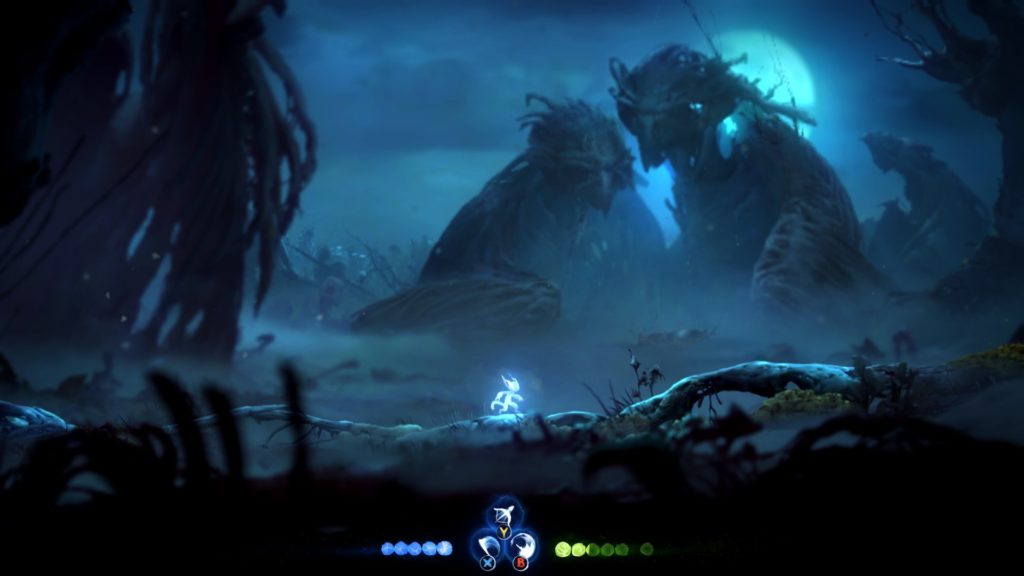- Genre: Metroidvania
- Platform: Xbox Series X
- Also Available On: Xbox One, Switch, Windows
I guess this is going to be a bit of a weird ramblings in that I don’t really plan to talk about the game, at least not directly. It’s been out for long enough that it’s been done to death. What I will talk about is the fact that playing this on the Series X redeemed the game for me. The first time I tried playing this I was incredibly disappointed. The gameplay was definitely there, and when it worked well it was really solid. But that was the problem, it generally wasn’t working that well. Framerate problems, load hitches, and crashes were all over, and it made getting through the game incredibly frustrating. Luckily we’re now back with faster hardware, not to mention a patch or two along the way. Now that the game’s unimpeded, it was exactly what I wanted – a Metroidvania with great flow, fun puzzles, and a lot of good reasons to re-traverse things as you gained new abilities. Simply put, this is now what I expected the first time around, and I couldn’t be happier about that.
I start here not because the screenshots are important to gameplay, but because I took damn near the same screenshot on the Xbox One and Series X, so it’s as good a visual comparison as I have. This level of change is indicative of the difference between the initial release and the one I played this second go around. It’s not just that things are clearer, but that certainly helps. Instead of running at 30ish, it now runs at flat 60 (or higher if your TV supports it). Instead of having load hitches all the time, there’s none. Where I was seeing crashes maybe every 30-40 minutes before, I didn’t see a single one this entire play through. It was such a completely different experience to play it without technical issues this go around.
The thing about me shelving the original one is that while it really came down to technical issues, it was ultimately a boss that did me in. The boss is against a large frog enemy in a sort of swampy area, and about half way through the fight you get sent underwater for good, which eliminates your ability to spend time healing in a pinch, adding a certain level of tension to the fight. Mechanically I knew the fight, but frustration absolutely got to me on it. The underwater phase just would not perform in a way that made the fight fun. In about a dozen deaths, I’d seen about a half dozen load hitches that would last for upwards of 3-5 seconds. The underwater phase itself basically guaranteed a framerate tank, which made fast movement difficult. At one point I’d gotten down to about 20% health remaining, and the game crashed.
Ultimately, frustration begets frustration. I get to a point when playing games where frustration at things just causes a landslide. Missing a jump can be frustrating in isolation, but is controllable. Dying to a boss is controllable when it feels fair. However, you start stacking these things up and I start losing those gaps where I have time to breathe and decompress. That causes impatience, which causes mistakes, which causes more frustration. When a game is crashing or having load hitches, all that’s happening is annoyances start to pile up that are not in my control, which just accelerates the problem. That is why I ultimately shelved it. It just wasn’t worth the cascade of frustration causing me to play worse.
This go around? I beat the boss on the third try, with the first two tries largely being me remembering the mechanics. No out of control frustrations, less annoyance, more patience, fewer mistakes. Now that I’ve beat the game completely, it turns out that for me that was by a long shot the most difficult fight anyway so doing it in the progression order I did the first go around was probably a recipe for disaster, but I did roughly the same progression this time and got through it. Not really because the game was different, but because it was now running great and I wasn’t pissed off about technical problems.
Cyberpunk was the big one this year that launched and had major obvious issues on console, but for me this one was my Cyberpunk months earlier. Metroidvanias are probably the one genre that comes close to JRPGs for me in terms of games that I will absolutely play above all else. Ori and the Blind Forest was such a spectacularly good game that shelving the sequel was something so unexpected that it blindsided me. Luckily, the current state of the game – especially on better hardware – has completely redeemed it for me. This is now the game I wanted to play, and not the game that crashed and burned. It’s now the mechanically fantastic game with incredible platforming flow. It’s now one of the flag bearers for the genre, instead of a game that wasn’t ready for launch.
It’s now a game that I recommend without question.



